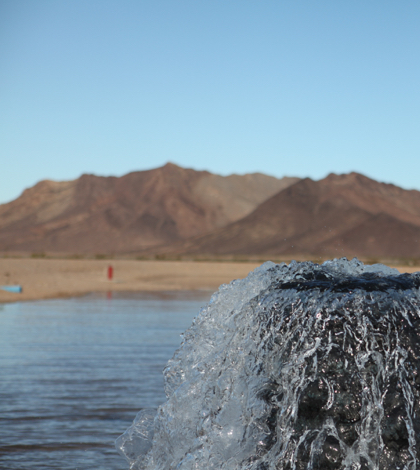In the midst of California’s most severe drought in decades, a new, privately funded venture to provide drinkable water to parched Southern Californians continues to make significant progress. The Cadiz Valley Water Conservation, Recovery and Storage Project is in its 7th year of development and will initially provide quality water for over 100,000 California households, 20 percent of which is guaranteed to San Bernardino County.
The first phase of the Cadiz Project includes the construction of a 43 mile pipeline to connect an underground aquifer in the east Mojave Desert containing up to 34 million acre feet of water to the Colorado River Aqueduct which transfers water to areas throughout Southern California.
The water to be delivered is approximately equal to the amount of water lost annually in the basin due to surface evaporation, which will instead be captured and provided to consumers. This is significantly less than could be used by Cadiz if their property were farmed as the property is currently zoned for agriculture.
The pipeline will be built underground in the existing Arizona & California Railroad right of way. The use of existing railroad right of way for pipelines and utilities is a common practice that includes pipelines for natural gas, water and petroleum, as well as telecommunications and electrical conduit. Use of the existing right of way also avoids creating new corridors across pristine desert in environmentally sensitive areas of the Mojave.
The Cadiz Project completed its environmental reviews in 2012 through the California Environmental Quality Act (CEQA), a stringent environmental review process that included comment and scrutiny from local governments, Federal Agencies including the National Parks Service as well as numerous environmental organizations. The final Environmental Impact Report (EIR) was approved in July of that year. Legal challenges to the EIR were rejected in 2014 and all approvals upheld.
As ground water is an important resource in the Cadiz Valley and surrounding communities, a secondary environmental management plan enforced by San Bernardino County over the project’s 50 year operation was imposed on the Project. The memorandum of understanding between the County, Cadiz and the Project lead agency Santa Margarita Water District creates a Groundwater Management, Monitoring and Mitigation Plan to be performed and monitored by the County. The GMMMP will insure the protection of desert resources including vegetation, mountain springs, and water and air quality.
Under this agreement, San Bernardino County ultimately has control over the aquifer, which will be regularly monitored for water level and quality. The County has the power to reduce pumping and even shut off the pumps if quality measures are not met.
The memorandum of understanding also guarantees that a minimum of 20 percent of the water provided by the project will be allocated to San Bernardino County water agencies with the remainder available to service providers in Riverside, Orange, and Los Angeles County. The agreement also provides a one-time allotment of water to any County water agency over the 50-year project.
“We welcomed the County’s independent oversight and enforcement of the Groundwater Management Plan because it was a critical component of our assurance for ongoing transparent review of the Project.” said Scott Slater, Cadiz CEO. “As approved by the County, the Project will provide a reliable, environmentally benign water supply for the region’s homes and businesses. We are a long-time desert business, and we are proud of our pledges to local enforcement, local hiring and local investment. We now we stand ready to partner with water providers in the Inland Empire to supplement their needs as the Project moves closer to construction.”
According to Cadiz, they are actively pursuing local water agency participants and have been in contact with numerous local water providers. The Lake Arrowhead Community Services District recently approved a letter of intent for service from the project.
Other participants in the project include the Jurupa Community Services, Three Valleys Municipal Water, and the Santa Margarita Water District.
In addition to finalizing participation with local water providers, the project is completing transportation arrangements to convey the water from the project area to the participants via the Colorado River Aqueduct, as well as pre-construction technical activities. Cadiz hopes to complete these milestones in 2015 and initiate construction early next year.
 IE Business Daily Business news for the Inland Empire.
IE Business Daily Business news for the Inland Empire.


